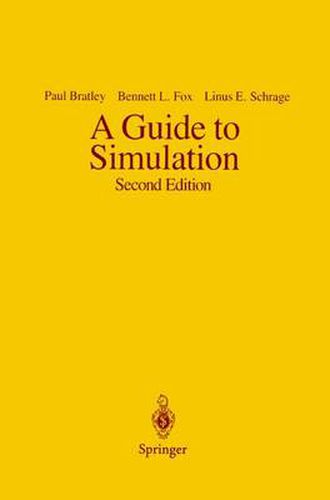Readings Newsletter
Become a Readings Member to make your shopping experience even easier.
Sign in or sign up for free!
You’re not far away from qualifying for FREE standard shipping within Australia
You’ve qualified for FREE standard shipping within Australia
The cart is loading…






This title is printed to order. This book may have been self-published. If so, we cannot guarantee the quality of the content. In the main most books will have gone through the editing process however some may not. We therefore suggest that you be aware of this before ordering this book. If in doubt check either the author or publisher’s details as we are unable to accept any returns unless they are faulty. Please contact us if you have any questions.
Changes and additions are sprinkled throughout. Among the significant new features are: * Markov-chain simulation (Sections 1. 3, 2. 6, 3. 6, 4. 3, 5. 4. 5, and 5. 5); * gradient estimation (Sections 1. 6, 2. 5, and 4. 9); * better handling of asynchronous observations (Sections 3. 3 and 3. 6); * radically updated treatment of indirect estimation (Section 3. 3); * new section on standardized time series (Section 3. 8); * better way to generate random integers (Section 6. 7. 1) and fractions (Appendix L, program UNIFL); * thirty-seven new problems plus improvements of old problems. Helpful comments by Peter Glynn, Barry Nelson, Lee Schruben, and Pierre Trudeau stimulated several changes. Our new random integer routine extends ideas of Aarni Perko. Our new random fraction routine implements Pierre L'Ecuyer’s recommended composite generator and provides seeds to produce disjoint streams. We thank Springer-Verlag and its late editor, Walter Kaufmann-Bilhler, for inviting us to update the book for its second edition. Working with them has been a pleasure. Denise St-Michel again contributed invaluable text-editing assistance. Preface to the First Edition Simulation means driving a model of a system with suitable inputs and observing the corresponding outputs. It is widely applied in engineering, in business, and in the physical and social sciences.
$9.00 standard shipping within Australia
FREE standard shipping within Australia for orders over $100.00
Express & International shipping calculated at checkout
This title is printed to order. This book may have been self-published. If so, we cannot guarantee the quality of the content. In the main most books will have gone through the editing process however some may not. We therefore suggest that you be aware of this before ordering this book. If in doubt check either the author or publisher’s details as we are unable to accept any returns unless they are faulty. Please contact us if you have any questions.
Changes and additions are sprinkled throughout. Among the significant new features are: * Markov-chain simulation (Sections 1. 3, 2. 6, 3. 6, 4. 3, 5. 4. 5, and 5. 5); * gradient estimation (Sections 1. 6, 2. 5, and 4. 9); * better handling of asynchronous observations (Sections 3. 3 and 3. 6); * radically updated treatment of indirect estimation (Section 3. 3); * new section on standardized time series (Section 3. 8); * better way to generate random integers (Section 6. 7. 1) and fractions (Appendix L, program UNIFL); * thirty-seven new problems plus improvements of old problems. Helpful comments by Peter Glynn, Barry Nelson, Lee Schruben, and Pierre Trudeau stimulated several changes. Our new random integer routine extends ideas of Aarni Perko. Our new random fraction routine implements Pierre L'Ecuyer’s recommended composite generator and provides seeds to produce disjoint streams. We thank Springer-Verlag and its late editor, Walter Kaufmann-Bilhler, for inviting us to update the book for its second edition. Working with them has been a pleasure. Denise St-Michel again contributed invaluable text-editing assistance. Preface to the First Edition Simulation means driving a model of a system with suitable inputs and observing the corresponding outputs. It is widely applied in engineering, in business, and in the physical and social sciences.